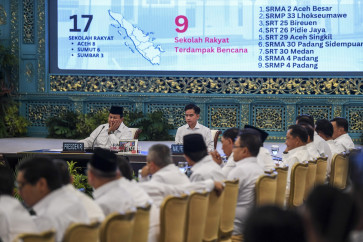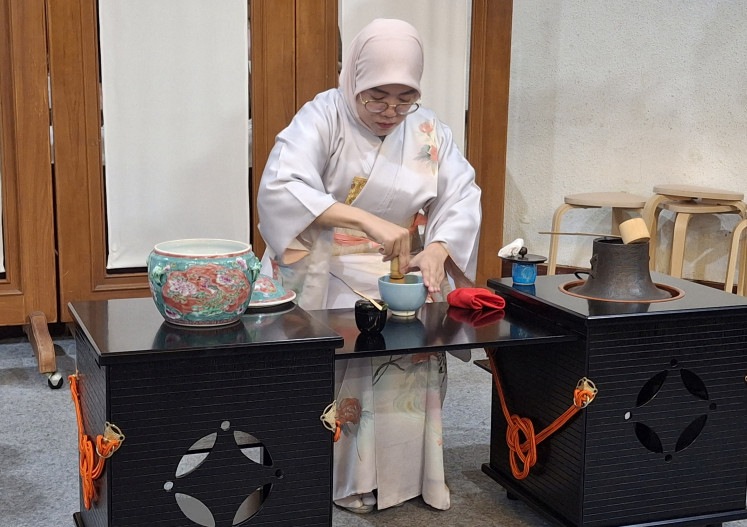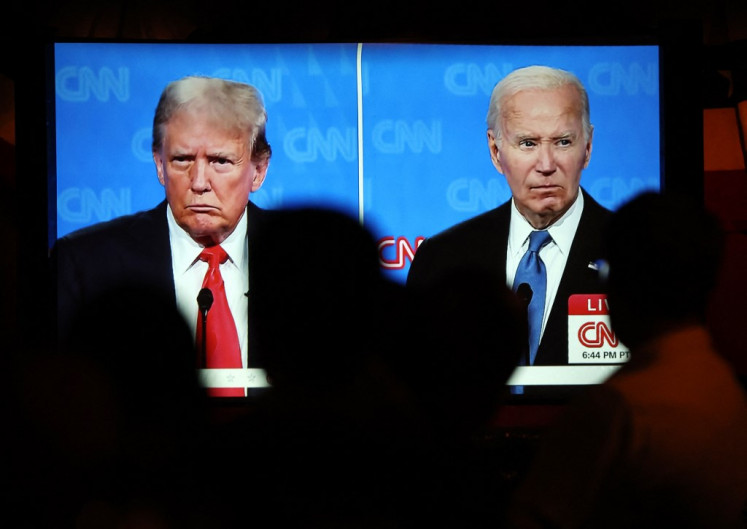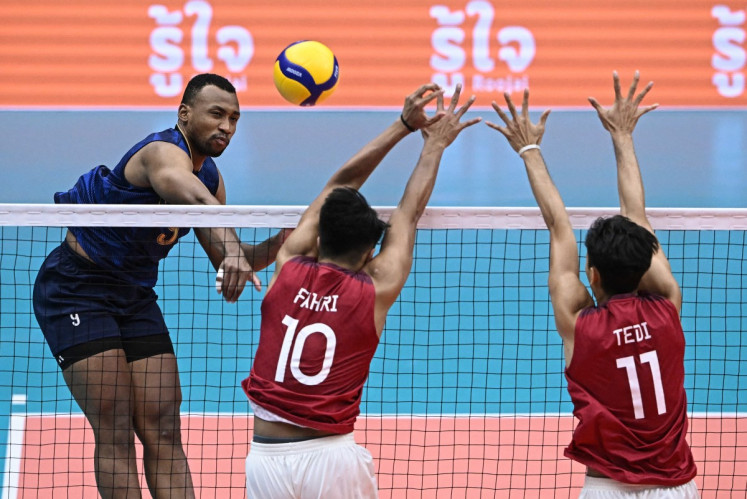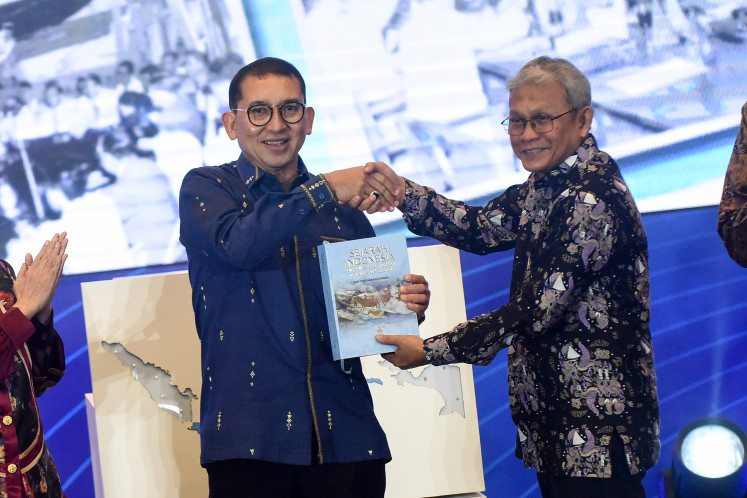Popular Reads
Top Results
Can't find what you're looking for?
View all search resultsPopular Reads
Top Results
Can't find what you're looking for?
View all search resultsTrio awarded Nobel prize for 'cool' method to study molecules
Change text size
Gift Premium Articles
to Anyone
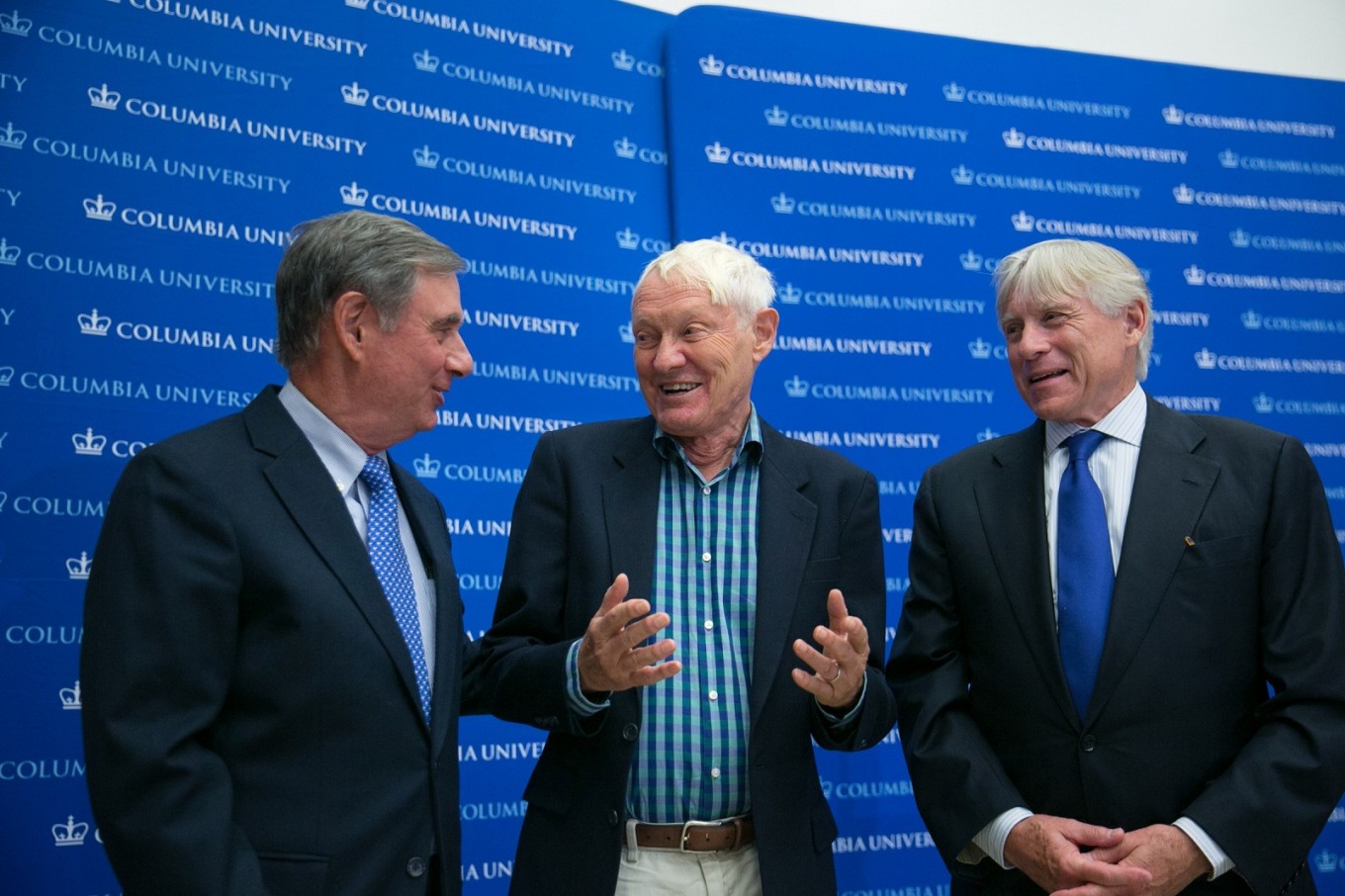 Dr. Joachim Frank of Columbia University speaks during a press conference after being awarded the Nobel Prize in Chemistry on October 4, 2017 in New York City. Frank and researchers Jacques Dubochet and Richard Henderson were awarded for developing a technique called cryo-electron microscopy (cryo-EM), which simplifies the process for looking at the machinery of life. (AFP/Kevin Hagen)
Dr. Joachim Frank of Columbia University speaks during a press conference after being awarded the Nobel Prize in Chemistry on October 4, 2017 in New York City. Frank and researchers Jacques Dubochet and Richard Henderson were awarded for developing a technique called cryo-electron microscopy (cryo-EM), which simplifies the process for looking at the machinery of life. (AFP/Kevin Hagen)
A
revolutionary technique dubbed cryo-electron microscopy, which has peered closer at the Zika virus and an Alzheimer's enzyme, earned scientists Jacques Dubochet, Joachim Frank and Richard Henderson the Nobel Chemistry Prize on Wednesday.
Thanks to the international team's "cool method", which uses electron beams to examine the tiniest structures of cells, "researchers can now freeze biomolecules mid-movement and visualise processes they have never previously seen," the Nobel chemistry committee said.
This has been "decisive for both the basic understanding of life's chemistry and for the development of pharmaceuticals," it added.
The ultra-sensitive imaging method allows molecules to be flash-frozen and studied in their natural form, without the need for dyes.
It has laid bare never-before-seen details of the tiny protein machines that run all cells.
"When researchers began to suspect that the Zika virus was causing the epidemic of brain-damaged newborns in Brazil, they turned to cryo-EM (electron microscopy) to visualise the virus," the committee said.
Frank, a 77-year-old German-born American, was woken from his sleep when the committee announced the prize in Stockholm.
"There are so many other discoveries every day, I was in a way speechless," said Frank, a biochemistry professor at Columbia University in New York. "It's wonderful news."
In the first half of the 20th century, biomolecules -– proteins, DNA and RNA –- were terra incognita on the map of biochemistry.
Because the powerful electron beam destroys biological material, electron microscopes were long thought to be useful only to study dead matter.
Read also: US biology trio wins Nobel Medicine Prize
Tea party
But Henderson, a 72-year-old Brit, used an electron microscope in 1990 to generate a three-dimensional image of a protein at atomic resolution, a groundbreaking discovery which proved the technology's potential.
Frank then made it widely usable by developing a method between 1975 and 1986 to transform the electron microscope's fuzzy two-dimensional images into sharp, 3-D composites.
Swiss national Dubochet, added water.
Now 75, he discovered in the 1980s how to cool water so quickly that it solidifies in liquid form around a biological sample, allowing the molecules to retain their natural shape.
The electron microscope's every nut and bolt has been optimised since these discoveries.
The required atomic resolution was reached in 2013, and researchers "can now routinely produce three-dimensional structures of biomolecules," according to the Nobel committee.
"A scientific prize is an ambiguous thing, it highlights an individual when we should highlight a collective effort, but I'm not alone," Dubochet told a news conference in Lausanne after the award announcement.
The honorary biophysics professor was noted not only for his humility, but also his humour.
On his resume, Dubochet notes he was "conceived by optimistic parents" in 1941, and quips that suffering from dyslexia permitted him to be "bad at everything".
The trio will share the prize money of nine million Swedish kronor (around $1.1 million or 943,100 euros).
"Normally what I'd do if I was in Cambridge, we will have a party around tea-time in the lab but I expect we'll have it tomorrow instead," said Henderson, who works at the MRC Laboratory of Molecular Biology.
Read also: US trio wins physics Nobel for spotting wrinkles in the cosmos
'Resolution revolution'
The announcement was praised by the scientific community and observers around the world.
John Savill, professor and CEO at the UK government-funded Medical Research Council, said electron microscopy has enabled scientists to examine disease molecules up close.
It was used, for example, to compile a detailed identikit of an enzyme implicated in Alzheimer's.
"Determining the structure of proteins in humans is critical to understanding how they interact in the body and developing better drugs for diseases," Savill said in a statement.
Dave Stuart, structural biology professor at Oxford University, described the technique as a "resolution revolution" which has enabled researchers "to see in exquisite detail the structures of life".
It can also be used to examine proteins that kickstart the immune system's attack on intruder viruses.
For John Hardy, a neuroscience professor at University College London, cryo-electron microscopy "opens up the possibility of rational drug design".
"And as a biologist, I can say that the pictures are beautiful," he added.
The Nobel Literature Prize is to be announced on Thursday at 1100 GMT.


